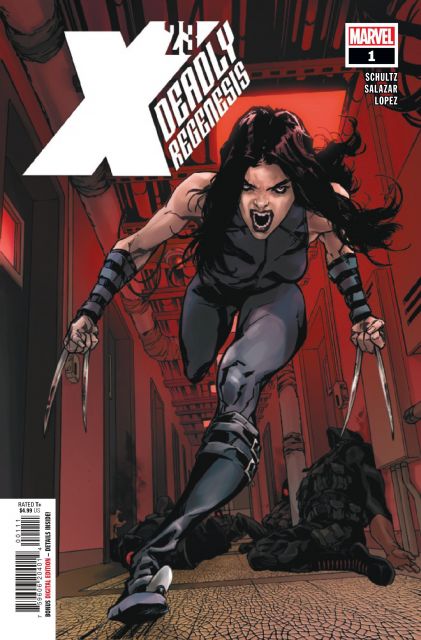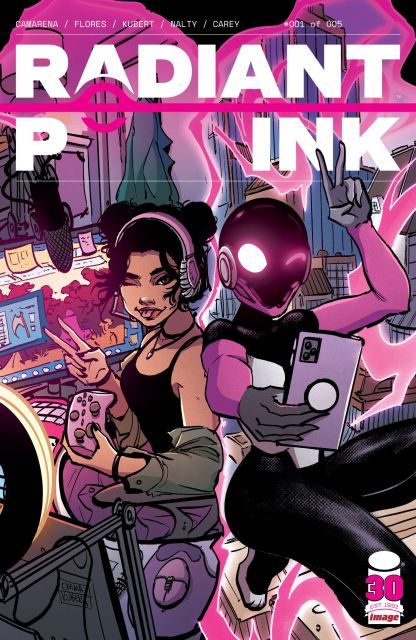Combine the cyberpunk genre with the intensity and action of John Wick. That’s the elevator pitch for Whatnot Publishing’s Liquid Kill #1, due out on Feb. 15. Written by Max Hoven and Aaron Crow, drawn, colored, and lettered by Gabriel Iumazark, with a sensational cover produced by Toni Infante, this book doesn’t shy away from amping up the violence or soaking itself in blood.
The first issue splits itself across two time periods. The first and third parts take place aboard the United States Geological Survey ship, where an all-female militia group interrogates supposed USGS members for information. Their methods of extracting information lean toward the extreme side. The middle section of Liquid Kill #1 takes place 20 years earlier and follows a mysterious man named Sylla who encounters Master Kai and his goons, who are up to no good in Bangkok, Thailand. As the issue progresses, it becomes clear that Sylla is connected to the militia group on the ship.

Visually and stylistically, Liquid Kill #1 is fantastic. Iumazark puts a lot of thought and effort into every panel, playing around with shadows and white space to create a unique-looking book that allows its characters and scenery to breathe. The artist is adept at knowing when to show what’s necessary and when to keep the story off-panel to toy with the reader’s emotions and reactions. It isn’t surprising the series’ press release mentions Ghost in the Shell as an influence since it’s clear to see this inspiration shining through in the artwork and layout.
Additionally, the color choices fit the grimy nature of the action on the pages. This is a dirty, futuristic world, and the aesthetic more than matches the tone. In fact, the brightest color here is the shade of red utilized for the blood.
While the art captivates, the writing of Liquid Kill #1 isn’t quite as powerful. There are hints of good ideas scattered throughout the issue, but the story feels stuck in the authors’ heads and not clear enough to the first-time reader. Obviously, as a series, more details will be revealed in forthcoming issues, and no one likes an exposition dump as an introductory first chapter of a story; however, there is a structural problem when the “why” of a story isn’t made clear from the get-go.

By the end of the issue, a reader needs to go back through the book and try to make heads or tails of what is actually taking place. While many books require multiple re-reads to uncover subliminal meanings and other layers of storytelling, this doesn’t come across as strongly or thought-provoking here.
Overall, Liquid Kill #1 is a visually appealing book that stands out immediately but is let down by its flimsy story. Judging by the first issue, this appears to be another case of style over substance for an action comic. However, there are moments that suggest there’s a good story tucked away somewhere in here. Perhaps the forthcoming installments might steer the ship and grab the attention beyond the outstanding artwork.















Leave a Reply